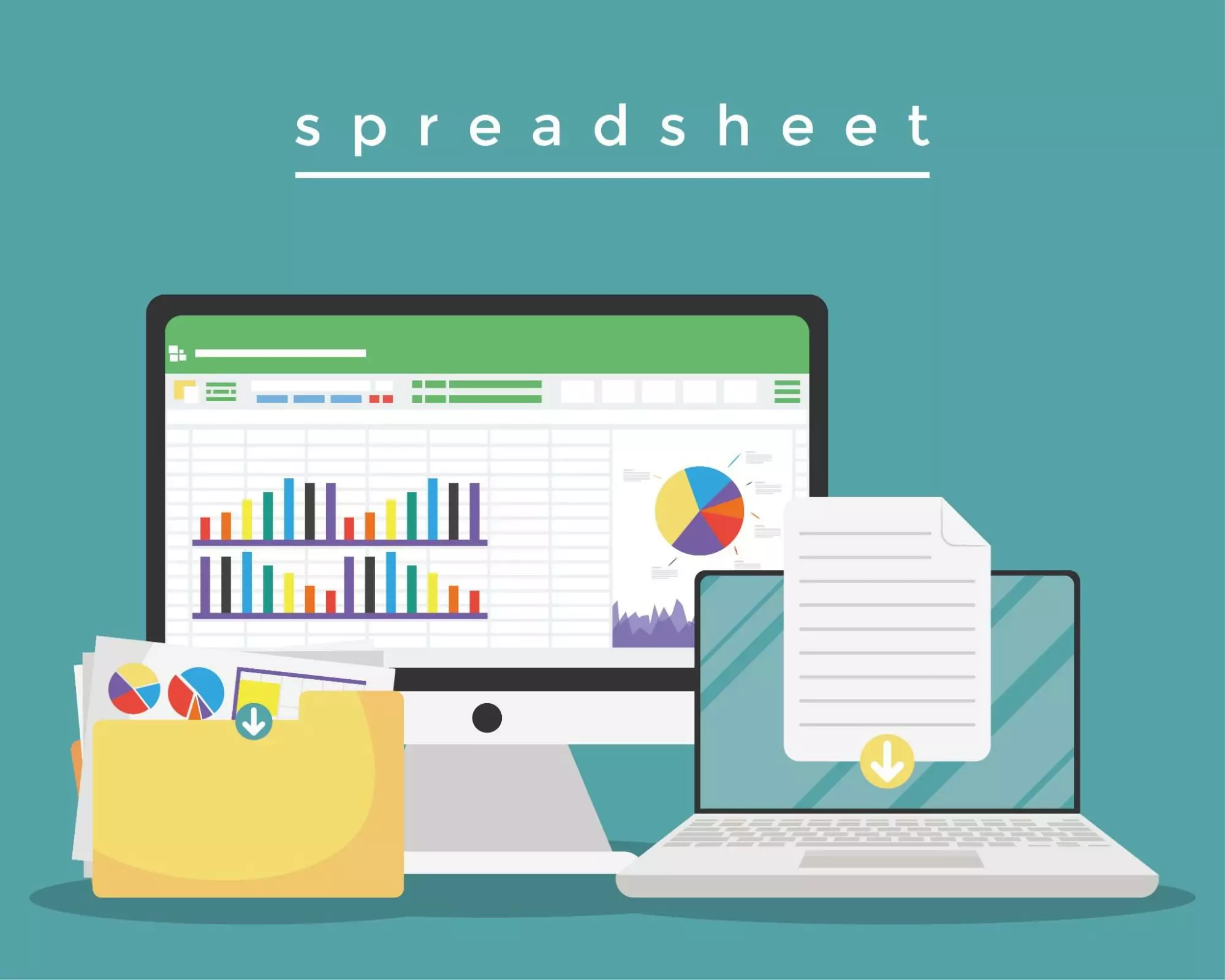Managing rental properties effectively requires significant time and organizational skill. Independent landlords often face challenges juggling tasks like collecting rent, tracking expenses, handling maintenance requests, and communicating with tenants, often relying on manual processes or basic spreadsheets. However, the landscape of rental management is evolving, with more landlords adopting specialized tools to streamline operations and maximize profitability.
This guide explores why property management software is becoming indispensable for landlords of all portfolio sizes and property types.
Key takeaways
- Property management software consolidates rent collection, accounting, and maintenance into one platform, reducing manual work and errors.
- Automated features like rent reminders and financial tracking save time, improve accuracy, and help increase net operating income.
- Whether managing one unit or 100, software solutions are available with features tailored for small landlords or large multifamily portfolios.
- Online payments, maintenance portals, and clear communication channels boost tenant satisfaction and retention.
- Many platforms offer free or low-cost plans for smaller landlords, with scalable pricing models for growing portfolios.
What is property management software for landlords?
Property management software is a specialized digital tool designed to help landlords and property managers handle the day-to-day operations of their rental properties. Instead of using disparate systems like spreadsheets, paper ledgers, email, and text messages, these platforms consolidate essential tasks into a single interface.
This type of rental property financial software caters specifically to the unique needs of rental property owners, offering features tailored for residential property management software, apartment property management software, condominium property management software, and even multi-property management software. It acts as a central hub for everything from financial tracking to tenant interactions, making it a powerful solution for both individual landlords and those managing multiple units.
Free All-in-One Property Management Software
Online banking, rent collection, accounting and more—all in one place.
Why landlords should use property management software
The decision to adopt property management software often stems from the need for greater efficiency and control. Manual methods, while seemingly inexpensive initially, can lead to errors, consume excessive time, and make it difficult to scale operations.
Utilizing professional property management software offers numerous benefits. It automates repetitive tasks, improves financial accuracy, enhances tenant communication, and provides crucial insights into portfolio performance. This not only saves time but can also help landlords make better business decisions and increase net operating income.
Property management software versus manual methods or spreadsheets
For years, many landlords have relied on spreadsheets or even paper records to manage their properties. While familiar, these methods are prone to human error, difficult to update across multiple properties, and lack automation. Tracking rent payments, reconciling bank accounts for property management, and categorizing expenses manually is time-consuming and can lead to mistakes that impact profitability or tax reporting accuracy.
In contrast, web-based property management software offers automation, data consistency, and real-time insights. Unlike a simple property management spreadsheet, software can automate rent reminders, track late fees, categorize transactions for easy tax preparation, and provide instant financial reports. This transition from manual tracking to a digital platform like an automated property management software significantly reduces administrative burden and improves overall efficiency.
Must-have features of property management software
When evaluating property management software platforms, certain features stand out as essential for effective rental management. These core functionalities address the most time-consuming and critical aspects of being a landlord.
Key features typically include:
- Online rent collection: Allows tenants to pay rent electronically via ACH or credit card, automates reminders, and tracks payment statuses. This streamlines the rent collection process, reduces late payments, and provides clear payment records. For advanced rental management, look for features like auto-pay options and integration with banking.
- Tenant screening & application management: Provides tools to manage rental applications and run background checks, credit checks, and eviction reports. This helps landlords find qualified tenants and reduces the risk of costly vacancies or legal issues. This is a critical part of effective landlord tools.
- Lease agreement management: Stores digital copies of leases, tracks key dates (start/end dates, renewal options), and may offer digital signing capabilities.
- Maintenance request tracking: Allows tenants to submit maintenance requests online, enabling landlords to track issues, manage vendors, and record expenses associated with repairs.
- Rental property accounting & financial reporting: This is a cornerstone feature. It automates transaction categorization, tracks income and expenses, helps with bank reconciliation, and generates essential financial reports like profit & loss statements and Schedule E reports for taxes. For real estate investment software, detailed financial tracking is paramount.
- Tenant communication tools: Provide a centralized platform for communication, keeping records of messages exchanged with tenants.
- Document storage: Securely stores important documents like leases, tenant applications, photos, and receipts.
Beyond these core features, more sophisticated platforms might offer ai property management software capabilities like automated expense categorization suggestions or predictive maintenance insights, or integrate with other services like landlord insurance and property loans. An all in one property management software aims to cover all these needs within a single platform.
Property management software platforms
The market for property management software is diverse, with platforms designed for various needs and budgets. Many offer free or low-cost options, particularly for small landlords or those managing just a few units. When considering the best property management apps, it’s helpful to look at popular options mentioned in the industry. Platforms like Landlord Studio, TenantCloud, RentRedi, and Buildium are frequently cited. Many guides to free landlord software also highlight platforms offering no-cost tiers for basic functions.
These platforms often cater to specific niches. Some are ideal for property management for small landlords focusing on simplicity and core tasks, while others are built for growing portfolios or those needing advanced features suitable for property management software for multifamily properties or commercial properties.
Researching individual property management software reviews can provide insights into user experience and platform reliability. For private landlords property management software offers a pathway to professionalize operations without hiring a third-party manager.
A comparison table of property management software
Choosing the right software involves comparing features, pricing, and target user base. Below is a simplified comparison based on common characteristics found in property management software platforms.
| Feature | Platform A (e.g., Targeting Small Landlords) | Platform B (e.g., Targeting Growing Portfolios) | Platform C (e.g., Targeting Larger Portfolios) |
|---|---|---|---|
| Pricing Model | Free up to X units, then per unit or tiered | Per unit or tiered based on portfolio size | Per unit or custom pricing |
| Typical Cost | $0 - $15/month (for small portfolios) | $10 - $50+/month per unit (tiered) | $40+ per unit or custom enterprise pricing |
| Online Rent | Yes (ACH) | Yes (ACH, Card) | Yes (ACH, Card, other options) |
| Tenant Screening | Add-on fee | Included or Add-on | Included |
| Accounting | Basic (Income/Expense) | Standard (Reporting, Bank Sync) | Advanced (GL, GAAP, Integrations) |
| Maintenance | Basic tracking | Work order management | Vendor network, mobile access |
| Lease Management | Basic storage | Document storage, e-sign add-on | Integrated templates, e-sign |
| Target User | DIY Landlords, 1-5 units | Small to Medium Portfolios, 5-50 units | Medium to Large Portfolios, 50+ units |
Note: Specific pricing and features vary significantly by provider and plan tier. This table provides a general overview based on typical offerings described in research.
Pros and cons of property management software
Implementing property management software offers significant advantages, but it’s also important to be aware of potential drawbacks. Understanding the 5 Pros and Cons of property management software can help landlords make an informed decision.
Pros:
- Time savings: Automation of tasks like rent collection, late fees, and expense tracking frees up significant time.
- Improved financial accuracy: Centralized accounting and reporting reduce errors and simplify tax preparation.
- Better organization: Keeps all property and tenant data, documents, and communication in one accessible place.
- Enhanced professionalism: Provides tenants with convenient online payment options and a formal communication channel.
- Data-driven insights: Generates reports on cash flow, profitability, and property performance to inform investment decisions.
Cons:
- Initial cost: While many offer free tiers, advanced features come with a property management software that can be a barrier for some.
- Learning curve: Requires time and effort to set up the software and learn its features effectively.
- Dependency on technology: Relies on internet access and the software provider’s platform stability.
- Data migration: Transferring existing data from spreadsheets or other systems can be challenging.
- Feature overload: Some platforms may offer more features than a landlord needs, leading to complexity.
Tips on choosing the right property management software
Selecting the ideal property management software requires careful consideration of your specific needs and goals. Follow these expert tips to pick the right platform:
- Assess your portfolio size and type: Software needs differ greatly between managing a single residential property, multiple apartments, or commercial units. Look for platforms designed for your scale and property type (e.g., condominium property management software, apartment property management software).
- Identify your must-have features: Prioritize the functionalities you need most, such as online rent collection, robust accounting, or maintenance tracking. Don’t pay for features you won’t use.
- Consider your budget: Determine how much you are willing to spend. Explore cheap property management software options or free tiers if budget is a primary concern, but ensure they meet your core needs. Understand how much does property management software cost for your specific portfolio size.
- Evaluate ease of use: A complex interface can negate the time-saving benefits. Look for platforms with an intuitive design and good customer support. Easy property management software should simplify your workflow, not complicate it.
- Check for scalability: Choose software that can grow with your portfolio if you plan to acquire more properties. Multi property management software capabilities are crucial for expansion.
- Read reviews and get recommendations: Look for property management software reviews from other landlords with similar portfolios.
- Take advantage of free trials and demos: Test the software yourself to see if it fits your workflow before committing.
Consider your current process. If you’re debating property management versus self-management, software can empower you to manage properties professionally yourself.
Property Management Software Cost
The cost of property management software varies widely based on the provider, features included, and pricing model. Common pricing structures include:
- Per-unit pricing: A fixed fee per rental unit per month (e.g., $1-$10 per unit). This is common for residential property management software.
- Tiered pricing: Different plans based on the number of units managed or the features included.
- Flat fee pricing: A single monthly fee regardless of the number of units, sometimes with limits.
- Free plans: Often available for landlords managing 1-3 units, typically with limited features or transaction fees
- Transaction fees: Some platforms charge small fees for online payments (e.g., credit card processing fees) or specific services like tenant screening.
How much does property management software cost can range from $0 for a single unit to hundreds of dollars per month for large portfolios with advanced needs. Cheap property management software options are available, particularly focusing on core functions like flexible rent collection for landlords and basic accounting. Understanding these models is key to budgeting effectively for property management software systems.
How to claim software costs back property management software
For landlords operating as a business, the cost of property management software is typically considered a deductible business expense. This means you can subtract the cost of the software from your rental income when calculating your taxable income. This effectively reduces your tax liability.
The specific way to deduct software costs depends on your business structure and local tax laws. Generally, it falls under operating expenses related to managing your rental software for a property business. It is always recommended to consult with a qualified tax professional to understand how to properly claim property management software costs on your tax return and ensure compliance with all applicable regulations.
Property management software for different portfolios
One of the great advantages of property management software is its adaptability to various portfolio sizes and property types. Whether you manage a single door or a large portfolio, there’s likely a solution tailored for you. This is why property management software best for small medium or large portfolio landlord is a relevant question.
- Small landlords (1-5 units): For those with just a few properties, basic property management software or a free tier can provide essential tools like online rent collection and basic expense tracking, helping to professionalize operations without significant cost. Property management for small landlords focuses on simplicity and efficiency for core tasks.
- Medium portfolios (5-50 units): Landlords in this range benefit greatly from automation features to handle increasing transaction volumes and tenant communications. They need robust accounting, maintenance tracking, and reporting capabilities. Multi property management software becomes crucial for managing different locations or property types efficiently.
- Large portfolios (50+ units): Larger operations require scalable solutions with advanced features like detailed financial reporting, bulk actions, potential API integrations, and dedicated support. Scalability and comprehensive features are key here.
- Specific property types: Whether managing residential properties, apartments, condominiums, vacation rentals (see how to manage vacation rentals), or commercial spaces, specialized versions or features within platforms cater to the unique requirements of each, such as managing HOA fees for condos or booking calendars for vacation rentals. Apartment property management software and condominium property management software are designed with these specific structures in mind.
Landlord’s property management software provides the necessary structure and tools to maintain organization, ensure financial clarity, and manage tenant relationships effectively, regardless of scale.
Conclusion
Property management software is no longer a luxury but a powerful tool that can transform how landlords operate. By automating tasks, improving financial tracking, and centralizing information, it saves valuable time, reduce stress, and helps unlock the full potential of your rental property investments.
Moving beyond manual methods to embrace a dedicated property management software system is an investment in efficiency, professionalism, and profitability. Explore the options available, consider your specific needs, and take advantage of trials to find the platform that will best help you streamline your rental business.
Ready to simplify your property finances? Discover how integrated tools can help you manage income, expenses, and reporting with ease.
FAQs
Property management software is a digital platform that helps landlords and property managers streamline tasks like rent collection, accounting, maintenance tracking, and tenant communication for rental properties.
It works by centralizing property, tenant, and financial data. Users can access features like online payment processing, automated reminders, digital lease storage, and financial reporting tools through a web or mobile interface.
Independent landlords, real estate investors, and professional property management companies use this software to efficiently manage residential, commercial, and specialty rental properties.
While not strictly required, even landlords with one unit can benefit from basic property management software for automating rent collection, organizing expenses for taxes, and maintaining professional records.
QuickBooks is primarily accounting software. While it can track income and expenses, it lacks landlord-specific features like online rent collection, tenant screening integration, lease management, and maintenance tracking workflows, making dedicated property management software a better fit for comprehensive rental management tasks.
Baselane is a top choice for small multifamily properties due to its affordability, ease of use, and core features like rent collection and maintenance tracking.
It offers tenants convenient online payments, faster maintenance responses, streamlined communication, and access to lease documents—all of which enhance the rental experience.
Costs range from $0–$15/month for small portfolios (often with free tiers) to $50+/month per unit for larger or enterprise-level platforms.
It centralizes and automates tasks like rent collection, accounting, maintenance tracking, lease management, tenant screening, and communication.
It's a web-based platform that stores data online, allowing landlords to access and manage properties from any device with internet access.
Baselane, Buildium, AppFolio, and TenantCloud are among the most widely used, depending on portfolio size and management needs.








